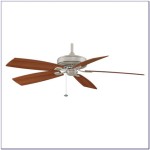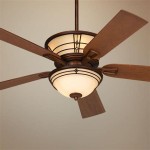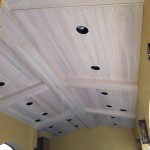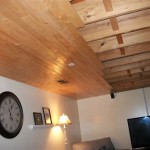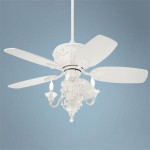Determining the Appropriate Ceiling Fan Size for a 10 x 215 cm Room
Selecting the correct size ceiling fan for a room is crucial for optimizing airflow and achieving desired cooling or heating circulation. An undersized fan will struggle to effectively move air throughout the space, leading to stagnant areas and uneven temperature distribution. Conversely, an oversized fan can create uncomfortable drafts, excessive noise, and potentially pose a safety hazard if not properly installed and supported. This article provides guidance on selecting the appropriate ceiling fan size for a room measuring 10 cm by 215 cm.
While the dimensions provided are unusual and likely a typographical error, the principle remains the same. The correct methodology involves analyzing the room's dimensions, specifically the width and length, to determine the square footage. This square footage then correlates to the necessary blade span for the ceiling fan. This methodology ensures efficient airflow and thermal comfort. It is essential to note that ceiling height also plays a role, with higher ceilings potentially requiring larger fans or downrods to optimize performance.
Therefore, we will initially consider the dimensions provided (10cm x 215cm) while acknowledging their impracticality for human occupancy, and then consider a hypothetical scenario using more standard dimensions to illustrate the calculation process more clearly. It will also be important to consider other factors affecting fan selection such as ceiling height, and the type of room.
Calculating Square Footage and Initial Fan Size Recommendation (Example 1: 10cm x 215cm)
To begin, the square footage of the room must be calculated. This is achieved by multiplying the length and width of the room. In this case, the calculation is as follows: 10 cm x 215 cm = 2150 square centimeters. Converting this to square meters for a more standard unit, this equals 0.215 square meters. This represents an extremely small room, more akin to a closet or a very narrow hallway.
Given such a small area, a standard ceiling fan would be entirely impractical. The smallest commercially available ceiling fans typically have blade spans of around 75-90 cm, vastly exceeding the dimensions of this space. Installing such a fan would be both visually jarring and functionally inappropriate. This example underscores the importance of accurate measurements when determining the appropriate fan size.
In this scenario, alternative ventilation solutions, such as a small desk fan or a through-wall exhaust fan, would be more suitable and effective. The sheer size disparity between a standard ceiling fan and the room dimensions renders a ceiling fan an impractical choice.
The following chart provides general guidelines for correlating room square footage with recommended fan blade span, but it's important to emphasize that this chart assumes reasonable room dimensions:
* Up to 75 square feet: 36-inch fan or smaller
* 76-144 square feet: 42-inch fan
* 145-225 square feet: 52-inch fan
* 226-400 square feet: 56-inch fan
* Over 400 square feet: 60-inch fan or larger (or multiple fans)
As we can see from this chart, the 0.215 square meter (or 2.3 square feet) room would require a fan far smaller than any readily available option, reiterating the need for alternative ventilation solutions in such small spaces.
Hypothetical Scenario: Room Dimensions of 10 feet x 15 feet (A Practical Example)
To provide a more practical illustration, let's consider a hypothetical room with dimensions of 10 feet by 15 feet. This represents a more typical room size, allowing for a more relevant discussion of ceiling fan selection. First, the square footage must be determined: 10 feet x 15 feet = 150 square feet.
Based on the chart above, a room with 150 square feet would ideally use a 42-inch or 52-inch ceiling fan. The selection between these two sizes depends on several additional factors, including ceiling height, the room's intended use, and personal preference.
For example, if the room has standard 8-foot ceilings, a 42-inch fan may be sufficient. However, if the ceiling is higher (9 feet or more), a 52-inch fan would likely provide better air circulation, especially if a downrod is used to lower the fan closer to the floor.
Furthermore, the room's purpose can influence fan size selection. A bedroom, where quiet operation is essential, might benefit from a 42-inch fan operating at a lower speed. A living room, where more robust airflow may be desired, could benefit from a 52-inch fan capable of moving a larger volume of air.
The aesthetic preferences of the occupants also play a role. Some individuals prefer the visual impact of a larger fan, while others prefer a more discreet option. Ultimately, the choice between a 42-inch and 52-inch fan for a 150 square foot room often comes down to these subjective considerations.
It's important to review the fan's specifications, especially the Cubic Feet per Minute (CFM) rating, which indicates the amount of air the fan moves. Higher CFM values generally indicate more powerful airflow. Compare the CFM ratings of different fans within the 42-inch and 52-inch size ranges to determine which model best suits the specific needs of the room.
Additional Factors Influencing Ceiling Fan Selection
Beyond room size, several other factors should be considered when selecting a ceiling fan. These include ceiling height, fan motor type, blade pitch, and the presence of any obstructions that might impede airflow.
Ceiling Height: As previously mentioned, ceiling height significantly impacts fan performance. For standard 8-foot ceilings, a flush-mount or hugger-style fan may be necessary to ensure adequate clearance. For higher ceilings, a downrod is essential to lower the fan and improve air circulation at the level of occupancy. The length of the downrod should be chosen such that the fan blades are approximately 8-9 feet above the floor.
Motor Type: Ceiling fans utilize different types of motors, each with varying levels of efficiency and noise. AC motors are typically less expensive but can be less energy-efficient and noisier than DC motors. DC motors are generally quieter, more energy-efficient, and offer a wider range of speed settings. While DC motor fans may have a higher initial cost, their long-term energy savings can offset this difference.
Blade Pitch: Blade pitch refers to the angle of the fan blades. A steeper blade pitch generally results in greater airflow. However, a steeper pitch can also increase noise levels. Choose a fan with a blade pitch that balances airflow with noise considerations. A blade pitch in the range of 12-15 degrees is often a good compromise.
Obstructions: Furniture, light fixtures, and other obstructions can impede airflow and reduce the effectiveness of a ceiling fan. Ensure that the fan is positioned to allow for unobstructed air circulation throughout the room. Consider the placement of furniture and other items when determining the optimal location for the fan.
Energy Efficiency: Look for ceiling fans with the Energy Star label. These fans meet specific energy efficiency standards and can help reduce energy consumption. Pay attention to the fan's wattage rating, which indicates the amount of electricity it uses. Lower wattage ratings generally indicate greater energy efficiency.
Lighting: Many ceiling fans come with integrated light fixtures. If the room requires additional lighting, selecting a fan with a light kit can be a convenient and space-saving solution. LED lighting is generally more energy-efficient than incandescent or halogen lighting.
Remote Control: Some ceiling fans come with remote controls, which allow for convenient adjustment of fan speed and light settings. Remote controls can be particularly useful for fans installed in rooms with high ceilings.
Before purchasing a ceiling fan, it is advisable to consult with a qualified electrician or HVAC professional. They can assess the specific needs of the room and provide recommendations based on factors such as room size, ceiling height, and electrical wiring.
In conclusion, selecting the appropriate ceiling fan size involves accurately measuring the room's dimensions, considering ceiling height, evaluating motor type and blade pitch, and accounting for any potential obstructions. By carefully considering these factors, an informed decision can be made to maximize airflow and thermal comfort within the space.

Ceiling Fan Size Guide Threesixty Fans

How To Select The Right Size For Every Room

Ceiling Fan Size Guide Delmarfans Com

What Size Ceiling Fan Is Best For Your Room

Ceiling Fan Size Guide Delmarfans Com

Ceiling Fan Size Guide Delmarfans Com

Ceiling Fan Size Guide Threesixty Fans

Ceiling Fan Size Guide What Do I Need 50 1000 Sq Ft

Pin Page

Ceiling Fan Size Guide Threesixty Fans
Related Posts


